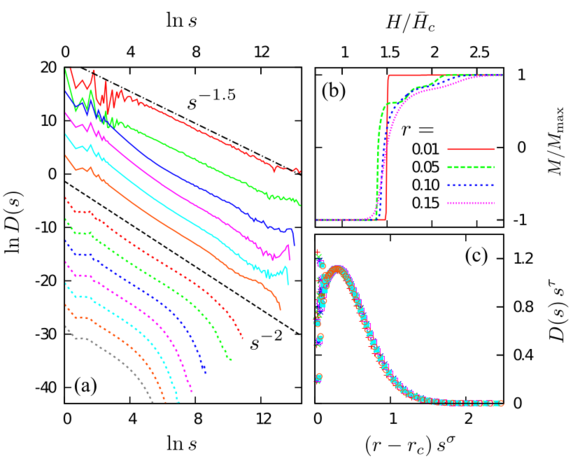 Figure 4: (a) Avalanche size distribution D(s) during magnetization reversal in a kagome spin ice consisting of N = 2420112 spins. The different curves correspond to a disorder level r = 0.02, 0.03, 0.05, 0.07, 0.08, 0.09, 0.1, 0.105, 0.1, 0.115, 0.125, 0.135, and 0.145 (from top to bottom). In the vicinity of the critical disorder rc ≈ 0.107, we find power law behavior D(s) ∼ s−2. This exponent gradually changes from τ = 2 to 1.5 in the supercritical regime below rc. (b) Magnetization M/Mmax vs applied field H/―Hc at various disorder strengths r in a kagome ice. (c) Scaling collapses of D(s) with parameters τ = 2.06 and σ = 0.63.
Figure 4: (a) Avalanche size distribution D(s) during magnetization reversal in a kagome spin ice consisting of N = 2420112 spins. The different curves correspond to a disorder level r = 0.02, 0.03, 0.05, 0.07, 0.08, 0.09, 0.1, 0.105, 0.1, 0.115, 0.125, 0.135, and 0.145 (from top to bottom). In the vicinity of the critical disorder rc ≈ 0.107, we find power law behavior D(s) ∼ s−2. This exponent gradually changes from τ = 2 to 1.5 in the supercritical regime below rc. (b) Magnetization M/Mmax vs applied field H/―Hc at various disorder strengths r in a kagome ice. (c) Scaling collapses of D(s) with parameters τ = 2.06 and σ = 0.63.
|
